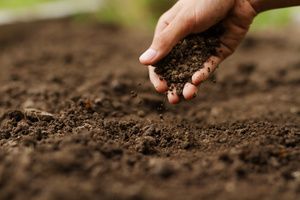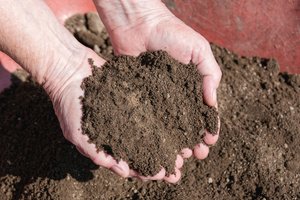 Hey there, green thumbs! If you’re an avid gardener, you already know that not all dirt is created equal. One of the superstars of the soil world is none other than loam soil. This MVP of the garden is a mix of sand, silt, and clay, offering the perfect texture and nutritional balance for plants.
Hey there, green thumbs! If you’re an avid gardener, you already know that not all dirt is created equal. One of the superstars of the soil world is none other than loam soil. This MVP of the garden is a mix of sand, silt, and clay, offering the perfect texture and nutritional balance for plants.
But even seasoned MVPs need a little coaching from time to time to bring out their very best game. That’s why we’ve put together these ten important loam soil tips to help you score a gardening home run—let’s dig in!
What is Loam? Unearthing the Ideal Soil
Have you ever encountered the term ‘loam’ and wondered, “What on earth is that?” Well, you’re in the right place. Let’s get dirty with the ideal soil for most plants—loam.
Loam: A Well-Balanced Blend
Loam is not a single type of soil. Instead, it’s a harmonious blend of three key ingredients: sand, silt, and clay. This soil supergroup comes together to create a texture and structure that’s just right for plant growth.
The Nitty-Gritty
Here’s how it breaks down. Sand, the largest particle in the mix, promotes excellent drainage. Silt, the mid-sized component, retains water well and packs a punch of nutrients. Clay, the smallest but no less important ingredient, is a champ at holding onto nutrients and water, preventing them from leaching away.
The proportions of these particles in loam are typically around 40% sand, 40% silt, and 20% clay. This combination results in soil with fantastic moisture retention capabilities, excellent drainage, and a great nutrient profile.
A Feel for Loam
If you’re getting hands-on, loam has a distinct feel. It’s typically dark, rich, and crumbly. It should hold its shape when you squeeze it but crumble easily when you poke it. This perfect texture means plant roots can easily spread and grow, accessing the nutrients and water they need without getting waterlogged or dried out.
The pH Factor
The soil’s pH level, a measure of its acidity or alkalinity, is crucial for plant health. Loam, like the quality loam soil from Dirt Connections, typically has a near-neutral pH of around 6 to 7.5, which is what most plants love. This pH level allows optimal nutrient uptake so plants get all the nutrients they need to thrive.
Nutrient Nirvana
Loam is a nutrient powerhouse. It’s typically rich in organic matter, which breaks down to release nutrients like nitrogen, phosphorus, and potassium—the essential macronutrients for plant growth.
The 10 Key Loam Soil Tips For Gardeners
Here are some key tips to keep in mind to help you make the most of this fantastic soil.
Tip 1: Understand Your Soil Composition
 The first thing any savvy gardener needs to do is understand their soil composition. Get yourself a soil testing kit to determine the sand, silt, and clay content. Knowing what you’re working with is the first step toward creating the perfect loam soil environment.
The first thing any savvy gardener needs to do is understand their soil composition. Get yourself a soil testing kit to determine the sand, silt, and clay content. Knowing what you’re working with is the first step toward creating the perfect loam soil environment.
Tip 2: Keep Your Soil Balanced
Loam is all about balance. If your soil is heavy on sand, it may drain too quickly. Too much clay, and you might have issues with waterlogging. Mixing in the right sand, silt, or clay proportion can help you achieve that loam sweet spot.
Tip 3: Water Wisely
Loam does a fantastic job at retaining and draining water. That said, keep an eye on your plants. You should promptly adjust your watering routine if they show signs of dehydration or waterlogging.
Tip 4: Add Organic Matter Regularly
Compost, aged manure, or green manure crops can enrich your loam soil, supplying it with a steady stream of nutrients. Adding organic matter helps maintain the soil’s fertility and feeds your plants continuously.
Tip 5: Test Your Soil’s pH
A near-neutral pH is ideal for most plants, and that’s typically what loam provides. However, certain plants prefer more acidic or alkaline conditions. Test your soil’s pH regularly and adjust accordingly using lime to increase pH or sulfur to decrease it.
Tip 6: Practice Crop Rotation
Planting the same crop repeatedly can deplete specific nutrients in your soil. By rotating crops and planting different plants in different seasons or years, you can help maintain nutrient balance in your loam soil.
Tip 7: Prevent Soil Erosion
While loam is less prone to erosion than sandy soil, it can still happen. Prevent soil erosion by planting ground covers, using mulch, or installing landscape fabric. These techniques can help protect your soil and preserve its structure.
Tip 8: Ensure Proper Drainage
Good drainage is vital for healthy plant growth. Ensure your garden has proper grading so water doesn’t pool in one place, potentially leading to waterlogged plants.
Tip 9: Stay Vigilant for Weeds
Weeds are nutrient thieves that love rich loam soil. Look for and pull them out promptly to ensure your plants get all the necessary nutrients.
Tip 10: Have a Pest Control Plan
Healthy soil leads to healthy plants. However, this can sometimes attract pests. A pest control plan can help protect your loamy garden paradise.
Trust Dirt Connections For Top-Quality Loam Soil
 So, there you have it, folks! All the loam low-down you need to let your garden thrive. But remember, even with the best advice, the success of your green oasis largely depends on the soil quality you’re starting with. And that’s where Dirt Connections comes in.
So, there you have it, folks! All the loam low-down you need to let your garden thrive. But remember, even with the best advice, the success of your green oasis largely depends on the soil quality you’re starting with. And that’s where Dirt Connections comes in.
At Dirt Connections, we’re not just about dirt; we’re about connections – connecting you to the highest quality materials for your gardening and construction needs. With over 30 years of experience in residential remodeling and commercial construction services, we’ve developed a keen eye for quality and service.
Whether you need premium loam soil, expert grading services, or just some solid advice from seasoned professionals, we’ve got you covered. Our team is ready to help, bringing our expertise, dedication, and top-notch service to every project, regardless of size.
So why wait? Start the journey to your dream garden today. Contact DirtConnections, and let’s turn that green thumb magic into a lush, thriving garden.
Summary

Dirt Connections was started with one goal in mind: providing quality residential and commercial construction services to clients on time and on budget. Reach out for more information on how we can support your next project.
For your convenience our estimates are free and by appointment. Call 703-940-9949 for a free estimate today!









































